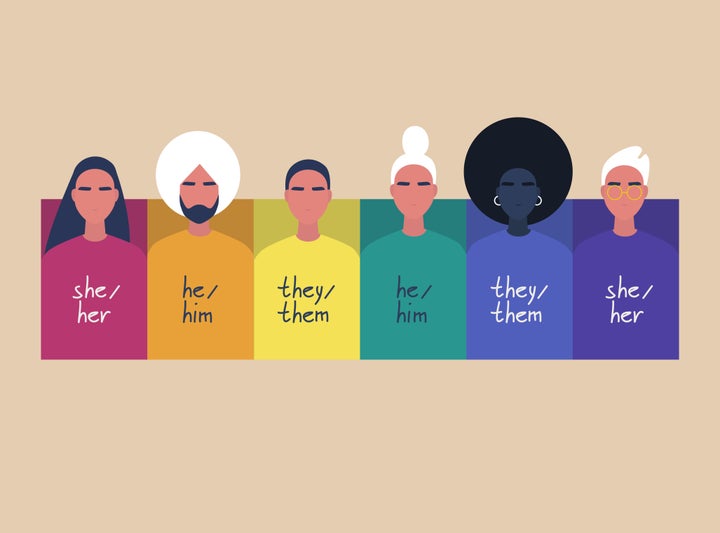
If the latest toys, trending baby names, and clothing lines are anything to go by, gender is only optional for the modern Canadian childhood. Gender-neutral parenting is more accepted than ever, with signs pointing to it becoming the norm: The majority of Canadian millennial parents are raising gender-neutral kids, with more choosing to do so from birth.
But does this mean you should paint your kid’s bedroom grey, throw out all pink/blue playthings, and start referring to your little one by the singular “they” pronoun? Not quite. Gender-neutral parenting doesn’t mean restricting who your kid is and what they can do.
There is no official rulebook on what gender-neutral parenting entails. It’s generally accepted that parents who adopt this approach don’t want stereotypes to dictate how they raise their kids. Whether they want daughters and sons to be treated equally or aim to affirm their child’s gender creativity, these parents hope their kids grow up feeling unlimited by being a boy, a girl, or non-binary.
Want to try parenting without gender restrictions? Here are some questions you might want to ask yourself:
Can my kid open up to me?

This parenting style won’t work if your child feels like they’re living under an anti-gender regime. Harvard Graduate School of Education’s Making Caring Common project recommends encouraging your kid to share how they feel about gender, in terms of their own and how gender roles show up at home. Let them know it’s OK to speak out if they catch you slipping into a stereotype and vice versa; that way, they won’t feel like they’ll be punished if they notice grown-ups aren’t practising what they’re preaching.
Watch: how raising daughters taught this dad to bust stereotypes. Story continues below.
Some kids may not voice what they need directly: In a small-scale study of trans Canadian kids, many worried their gender needs would “bother” their parents. It can be helpful to lead the conversation by giving them examples where a stereotype negatively affected you or another family member. Another activity you can do together? Brainstorm how your family is awesome in ways that aren’t gender-typical: maybe dad’s long hair or an aunt’s thriving construction career.
Learn more: Harvard’s Making Caring Common project.
Is my home encouraging gender bias?

Kids start understanding gender expectations as young as four, the Canadian Paediatric Society reports. They develop these ideas based on the world around them and those they interact with.
Since these messages start at home, parents should model what they want their kids to believe. From making sure chores aren’t gendered (i.e. mom does the cleaning, dad’s always on grill duty) to refraining from universal statements that start with “all girls” or “boys are,” these can help kids understand that gender doesn’t limit what tasks they accomplish.
Home decor should also be looked at. Designer Suzanne Tick recommends making a kid’s personal space fun to explore by decorating their room with bold colours. She told the New York Times that “soft tents, soft places where one can crawl” can enhance that experience.
Learn more: UN Women.
How do I explain gender to them?
Instead of focusing on anatomical differences when you talk to kids about gender identity, parents can show kids how biological sex, gender identity and gender expression are different from each other. Educational tools like the “Gingerbread Person” and the “Gender Unicorn” are useful for breaking down how gender might not match sex or what someone looks like.
By using sliders and scales, these illustrations show kids that they aren’t stuck with two categories to choose from; even the sex assigned at birth based on external characteristics may not take into account those who are intersex.
Should preschoolers have questions about body parts, sexual health educator Nadine Thornhill encourages answering their questions simply.
“Different people have different bodies,” Thornhill wrote as an example for parenting resource website Talk With Your Kids.
Learn more: Refinery29.
OK, how about pronouns?

Gender pronouns are hotly debated among adults, but they’re surprisingly easy to address with kids. Pronouns are a way to refer to someone in the third-person. Using someone’s correct pronouns is a sign of respect and if you don’t know someone’s pronouns, resort to the singular they until you do.
Children might enjoy trying out different pronouns to see which ones they feel most comfortable with. Don’t worry if you or your kid mess up and misgender someone: Most advocates suggest saying sorry, correcting the slip-up, and continuing the conversation. Doing it on purpose is another story: In a pronoun guide for families, the Human Rights Campaign emphasizes that deliberate misgendering can be a hurtful experience.
Steer away from calling they and them a “non-binary pronoun”; many gender identities may choose to go by the singular they and non-binary people don’t always refer to themselves by it.
Learn more: CBC Kids, Human Rights Campaign.
What clothes and toys should I buy?
Before making a purchase, Planned Parenthood suggests considering if a toy or book will expand a kid’s idea of who they can be when they’re older. Mindful consumption can come in handy here: Letting a child choose what they want and having them explain why they like it can help you understand what motivates their interests.
Toy catalogues are notorious for enforcing a binary of playtime. Toys are not only more gendered than they were 50 years ago, they’re pigeon-holing who kids are: A U.K. survey found that boys’ toy ads were action-packed, while girls’ toy ads focused on being pretty and making friends.
This doesn’t mean pink and blue toys are your enemies; if your kid plays with a toy that’s seen as typical for their gender, gauge if they’re truly enjoying their playtime or if they seem obligated to play with it. Toys that seem excessively gendered to adults might not register that way to kids.
Learn more: Let Toys Be Toys
What do we do if my kid gets stereotyped?
There’s a recurring theme in most gender-neutral parenting anecdotes: The biggest challenge isn’t finding clothes or toys that don’t play into stereotypes, it’s dealing with judgmental adults.
“When I was pregnant, I would often be asked if I wanted a boy or a girl. I would respond that I wanted a healthy child,” parent Kyisha Williams wrote for HuffPost Canada.
“When [my child] Nova was assumed a boy, they were called ‘strong, brave, smart, funny.’ When Nova was assumed a girl, they were called ‘sweet, delicate, cute, kind,’” parent Ashlee Dean Wells wrote for Upworthy.
This is where an adult’s support can make a world of difference: Kids learn how to stand up for themselves by watching grown-ups do it first. Even if you face pushback from other parents over your rearing style, kids will take away the importance of staying true to who they are, no matter what.
20 Ideas For 2020 is our month-long series that explores easy ways to take action on the ideas and changes you may have already been thinking about.
Also on HuffPost:
